Rising seas threaten more Coast homes than ever before
EXCLUSIVE: More Coast homes than ever are at risk of being inundated by rising sea levels, new modelling reveals - so is your home at risk?
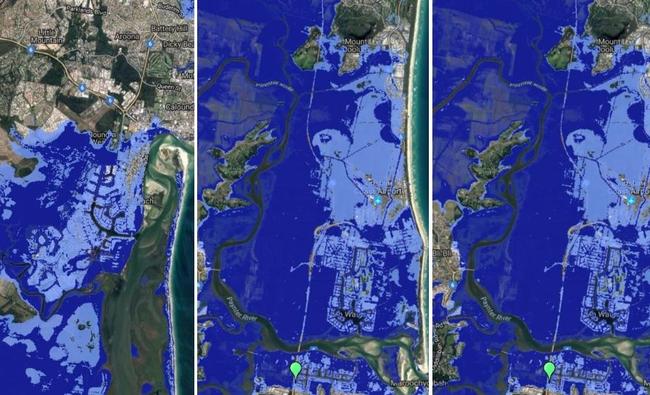
Sunshine Coast
Don't miss out on the headlines from Sunshine Coast. Followed categories will be added to My News.
NEW flood modelling has shown more Coast homes than ever before are at risk of being inundated by rising sea levels.
In just four years and two reports, the worst-case sea level rise has increased by 1.3m, from 0.74m to 2m, driven largely by rapid ice melting in Antarctica and Greenland, although a 2m sea level rise remains a less than 2% chance of happening by 2100.
The Sunshine Coast Airport, high and dry in 2013 mapping based on International Panel of Climate Change data, is also underwater in 2100, in new mapping based on a 2017 US Department of Commerce National Oceanic and Atmospheric Administration report.
The airport is being redeveloped, with 1.1 million cubic metres of fill to be used on the new runway construction, which is being built to withstand a one-in-100-year flood combined with a 2100 sea level rise scenario of 0.8m.
A number of homes along the coastal strip previously untouched have also been flagged as being inundated, although the updated worst case is expected to only be a 2% chance of happening.
University of New South Wales' Climate Change Research Centre Professor John Church added these were "early results" for unmitigated greenhouse gas emissions.
"With unmitigated emissions, the only question is when we get there (worst case)," he said.
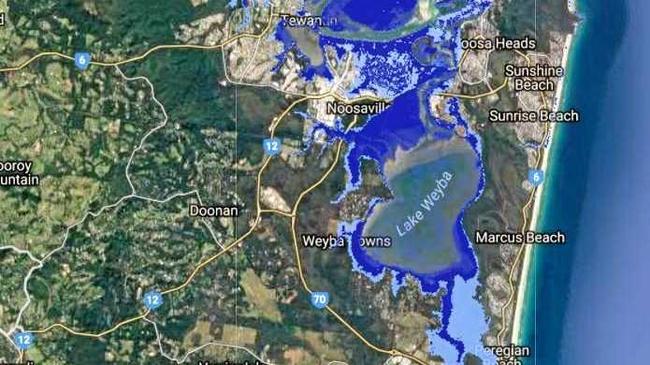
He said recent research done after the 2013 report had documented how rapidly the Antarctic ice was melting, prompting the worst-case revisions.
NGIS Australia principal consultant Nathan Eaton was part of the team that developed the latest Coastal Risk Australia mapping released today.
He said as a result of the rapid ice sheet melts, the previous worst-case of a 0.74m rise in sea levels was now looking likely to occur as a matter of course, based on the current rate of greenhouse gas emissions.
But he said there was a less than 2% chance of the new, 2m worst-case scenario being realised.
"We're very unlikely to see that," Mr Eaton said.
"It's a legitimate worst-case scenario."
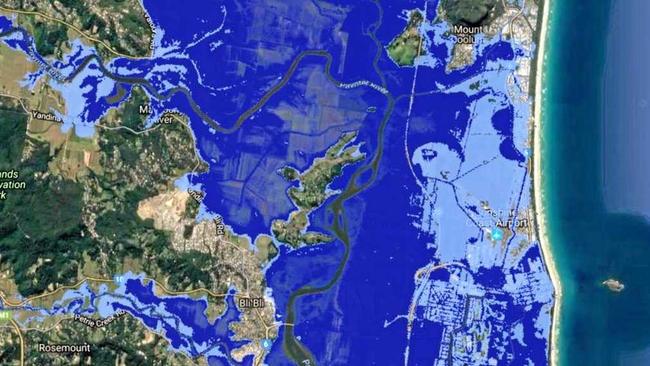
He said the mapping had been developed this year to contrast the two worst-case scenarios and highlight how much they'd changed in four years.
Mr Eaton said more research needed to be done, and mapping should be updated annually and used to guide coastal planning policies into the future.
"It just shows that we need to be doing more and more modelling," he said.
He said the change was not significant by 2030, but as sea level increased, the effects began to compound, gain momentum and eventually lead to more widespread inundation of coastal areas.
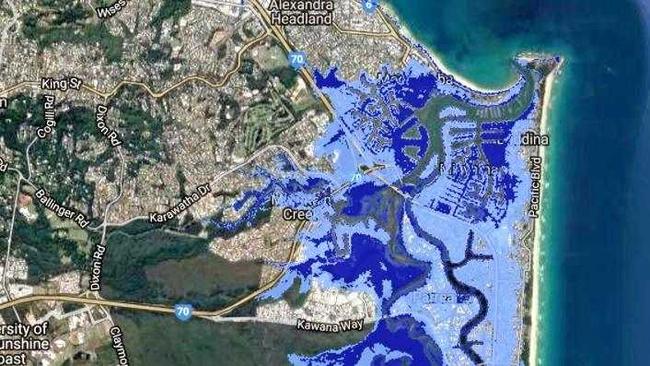
But it appeared any talk of possible sea level rise or climate change impacts weren't affecting the Coast property market.
Amber Werchon Property's sales agent Mark McGill has been selling houses in the region for the best part of a decade and has been twice crowned the Real Estate Institute of Queensland's salesperson of the year.
He said it was, for the majority, a "non-issue" when it came to buying or selling properties.
"It (climate change) certainly hasn't stopped people buying waterfront and people buying on the beach," he said.
"We're not seeing any impact from buyers and to be honest, we rarely hear the words climate change from buyers... price and location are certainly the first (considerations)."
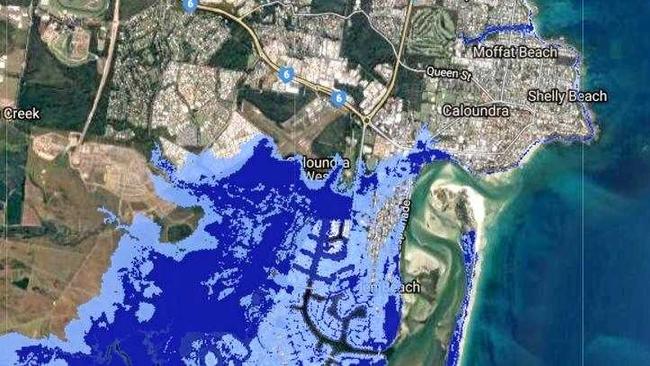
He said most people were buying properties and selling them again within 10-15 years, so considerations of possible sea level rise in 2100 was not a major factor.
Sunshine Coast Councillor and planning portfolio holder Christian Dickson said the current planning scheme included considerations for sea level rise, which has been factored at 0.8m by 2100.
He said the council made ongoing updates to flood and storm mapping data and reports like the US Department of Commerce's helped inform and develop climate adaptation policies.
The council's also secured funding to develop a Coastal Hazard Adaptation Strategy.


